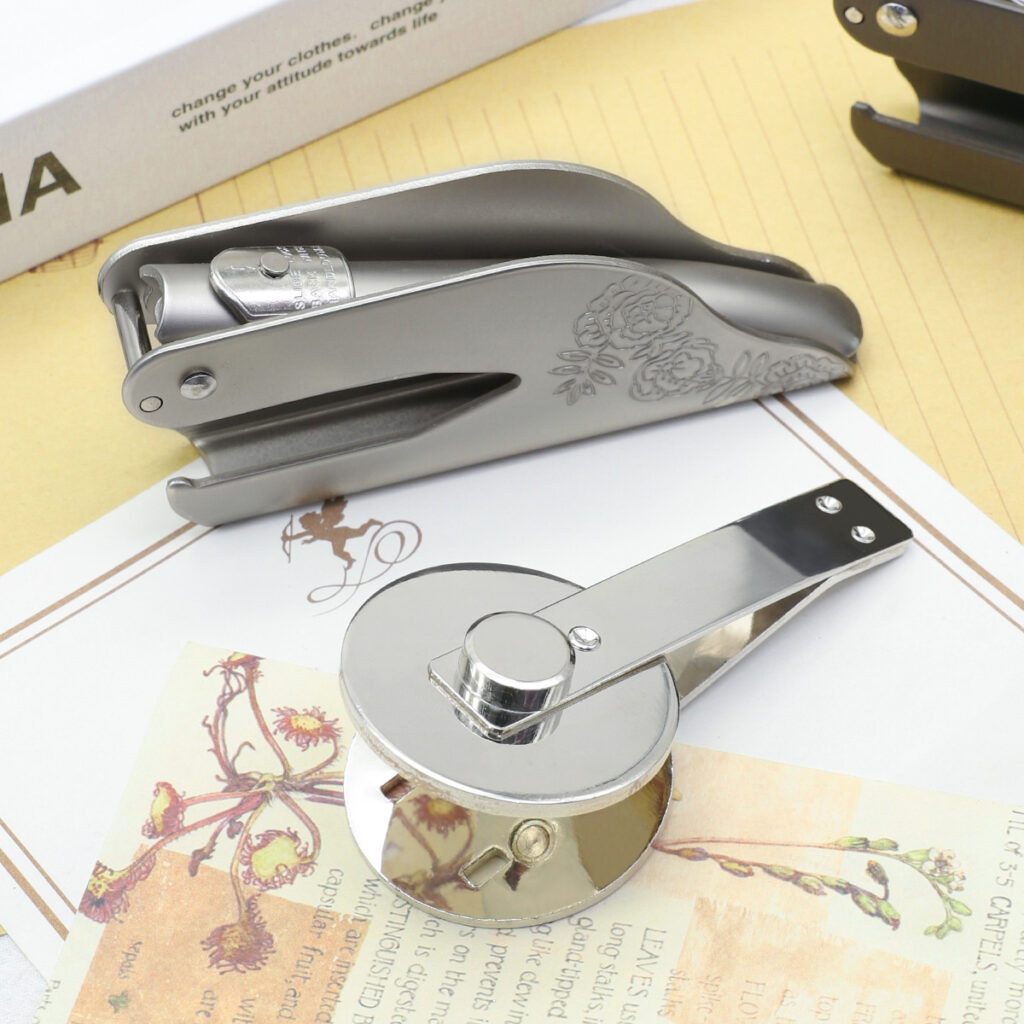Custom Embossing Stamp Press: Make Raised Designs Anywhere!
Do we still desire to give things a unique warmth in the fast-paced daily life? The small embossing stamp pliers are quietly lying in the

Opening a planner feels nice. The cover is soft, the pages are smooth. You see writing, washi tape, stickers – all telling the story of your days. It’s like your time leaves footprints on the paper. And one tool, the embossing seal, puts a clear, personal mark right on this record of your life.

So, where did planners start? People have always wanted to track time. In the past, the Romans used small notebooks called “adversaria” to remember things, such as marking where the water flowed each day. Later, in medieval times, monks wrote strict schedules (“horarium”) in books, planning prayer and work times. Time had structure on those pages. During the Renaissance, European merchants carried “commonplace books”. These mixed business notes, quotes, and sketches – useful stuff and cool ideas together. It was like finding gold in the sand. These became the first places to keep personal notes about one’s life.
But the planners we know today took shape in Japan after the Meiji Restoration. In the Meiji period, small “pocket diaries” became popular for quick notes. By the Taisho and Showa eras, planners got more organized with monthly views, weekly sections, and address books, becoming real tools for managing time. After the war, as Japan’s economy grew, people needed better organization. Planners changed from just tracking time to helping plan work and life precisely. Japanese brands like “Nore Techo” (Efficiency Planner) became famous. They were super organized and well-designed, bringing order to the chaos of time, like making neat gardens out of messy land.
Nowadays, planners are more than just tools. They’ve become a way to express yourself and make life beautiful. People don’t just write in them; they decorate pages with stickers, drawings, and custom embossing stamps. They turn everyday stuff into little works of art. Pages become personal landscapes of color, lines, and words. And that’s where the paper embossing stamp stands out.
The custom embossing stamps are like a modern version of old wax seals. Its metal design presses hard into the paper with a satisfying click. It leaves a special mark – maybe a date, your initials, or a cool symbol. Pressing it down feels like signing your name on that moment in time. It’s saying “I was here” in a serious way, like crowning the “now”. When the seal sinks into the page, it’s more than just writing. It’s a physical sign that you own that moment in the big river of time. It’s your unique footprint on the shore.
Running your finger over that raised seal mark on the page… it feels like a whisper: We’re lucky to have these little books in the huge flow of time. They started simple, for reminders. They grew into tools for getting things done. Now, they bloom as places to show who you are. The seal presses down, and the page trembles a bit. It’s not just decoration. It’s your soul leaving a lasting echo on the page of time – proof you were here, that you lived seriously, and that you made your mark, however small, in the rushing river of time.
When you close your planner, that seal mark is like a little fossil in rock. It holds your attention and care for life itself.
Do we still desire to give things a unique warmth in the fast-paced daily life? The small embossing stamp pliers are quietly lying in the
Opening a planner feels nice. The cover is soft, the pages are smooth. You see writing, washi tape, stickers – all telling the story of
Ever run your fingers over a hardcover book? Those raised lines you feel, or the embossing seal on a marriage certificate – they aren’t drawn.
Traditionally, Embossing stamps are the guardians of the authority of company documents and contracts. Their clear and hard-to-replicate physical imprints symbolize commitment and trust. However,
Our custom logo stamps are the highest quality. They stamp on your products clearly for the most visible perfect stamp. Our custom logo machines are the ultimate keepsake you can cherish forever.
Hot Tags
Hot Stamping Machines
Embossing Seals
Wax Seal Stamps
Keep in Touch
Annabelle Lee
Email: annabelle@trodiss.com
Add.: Room 1602, Block D, First International Business Building, Nancheng, Dongguan City, Guangdong Province, China.
Copyright © 2005-2025 Trodiss Group. All rights reserved